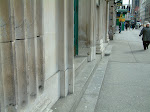Eating for Healthy Teeth Tips
Avoid eating between meals:
-Fewer snacks will lead to less acid exposure for your teeth.
-If you snack, choose foods such as carrot sticks, or celery.
Reduce the consumption of the following beverages:
-Soft drinks or any other drinks that contain sugar.
-Coffee or tea with added sugar, cocoa and lemonade.
-Fruit juices
-The best time to consume them is with you meal.
-These beverages if consumed with a meal exposes your teeth to acids for a
shorter amount of time.
Reduce candy consumption:
-Hard and soft candies have enough sugar to increase the acid produced by bacteria to decay levels.
-Instead use sugarless varieties.
Consume very acidic foods (such as citrus fruits) in moderation:
-These food items can make the mouth more acidic contributing to a loss of minerals in the teeth.
-The effects of acid exposure occur overtime.
Don’t forget to brush:
-Brush your teeth after eating and after drinking sugary drinks.
-This will help remove the plaque bacteria that create the destructive acids.
-If you cannot brush after every meal, brush at least twice a day.
Food items to Consume
Best Food Choices: Cheese, chicken or other meats, or nuts. These foods actually may help protect tooth enamel. They do this by neutralizing acids or by providing the calcium and phosphorus needed to put minerals back in the teeth. Unsweetened tea and water, especially fluoridated water. Tea also has fluoride, which can strengthen tooth enamel. Water helps flush away bits of food. It also can dilute the sugar acids.
Moderate Food choices: Firm fruits such as apples and pears and vegetables contain natural sugars. Their high water content dilutes the effects of the sugars. These fruits also stimulate the flow of saliva, which fights bacteria and helps protect against decay.
Worst Food choices: Candy, cookies, cakes, crackers, breads, muffins, potato chips,
french fries, pretzels, bananas, raisins and other dried fruits. These foods provide
a source of sugar that certain bacteria can use to produce acid. The problem can







No comments:
Post a Comment